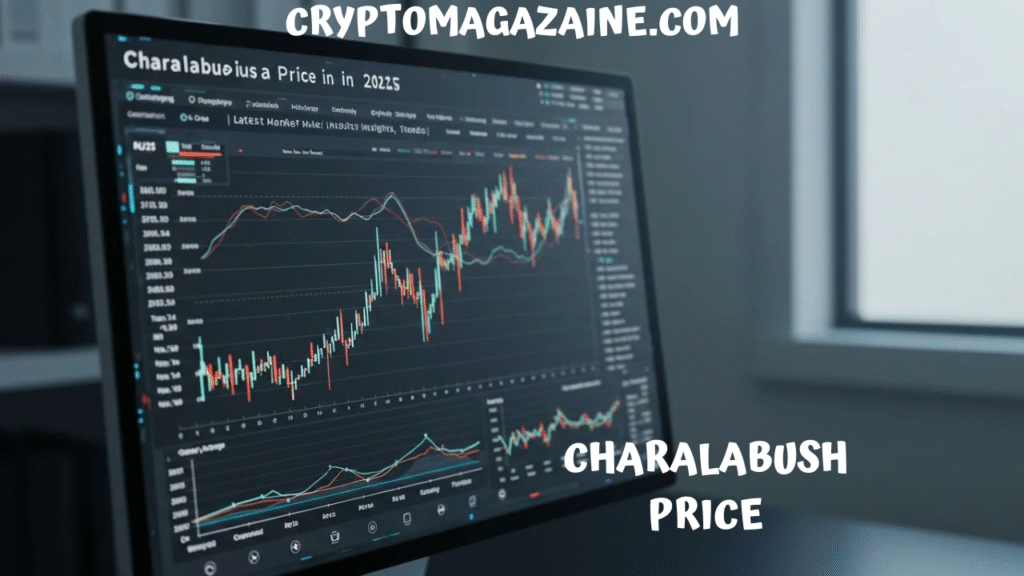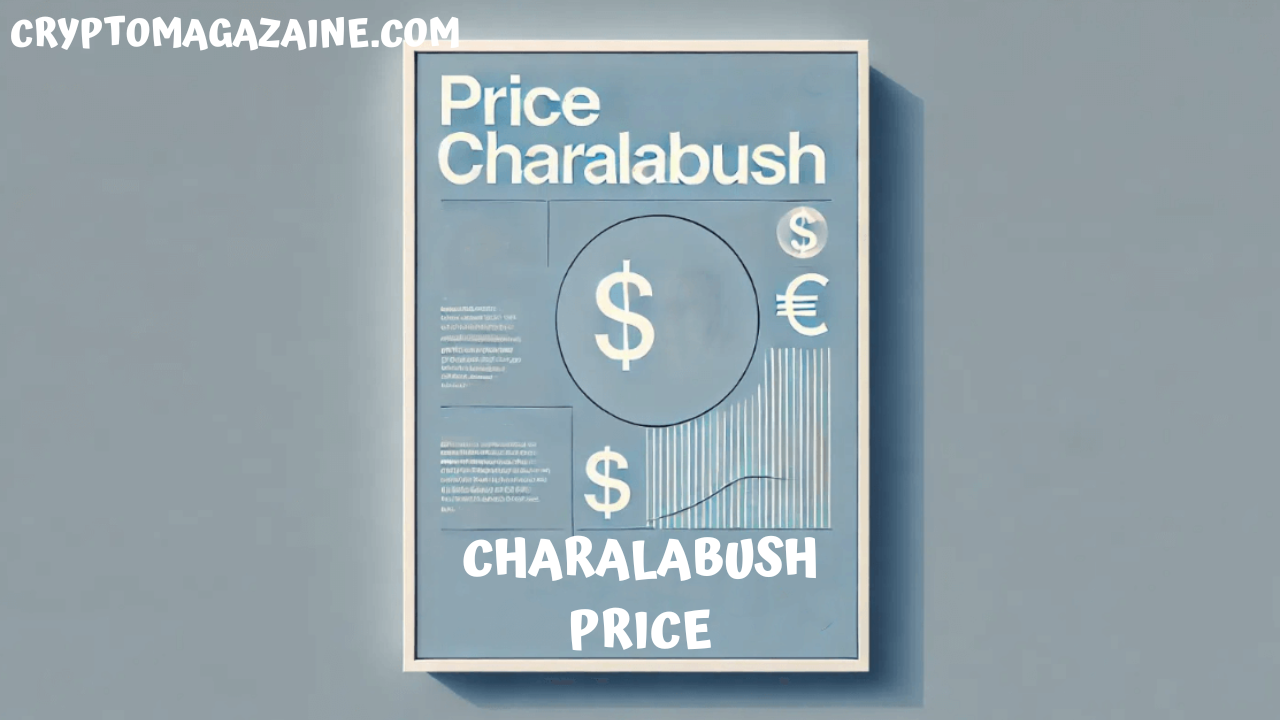Charalabush price has become a widely discussed topic across various economic and consumer platforms due to its growing demand and unique place in the market. Understanding the true nature of charalabush price requires an in-depth look at what the product represents, how it is valued, and what determines its price range across different regions. Over the past few years, the charalabush price has fluctuated significantly, reflecting the influence of supply chains, production methods, and global trends. The value of charalabush is not only determined by its raw material or quality but also by the economic conditions surrounding its production and distribution. As consumer awareness rises and market transparency improves, more individuals are beginning to explore how charalabush price is set and what future changes might occur in its valuation.
In this comprehensive article, we will explore every dimension of charalabush price, breaking down its structure, the factors driving its cost, and the patterns that make it an essential product in today’s global marketplace. Understanding the charalabush price isn’t just about numbers—it’s about recognizing the deeper economic, social, and industrial forces that shape its value over time.
Historical Overview of Charalabush Price Trends

The evolution of charalabush price has been marked by steady growth, periodic declines, and several key turning points that shaped its current market position. Initially, when charalabush was introduced into commercial circulation, its price was relatively low due to limited awareness and availability. However, as production improved and distribution networks expanded, the charalabush price began to rise steadily. Market analysts often point to specific periods where external factors like trade policies, production costs, and regional demands had a direct impact on charalabush price fluctuations.
Over the past decade, globalization has also played a crucial role in determining charalabush price. International demand and technological improvements in the industry have increased competition, creating both pressure and opportunity for manufacturers and distributors. These changes have led to greater price diversification, allowing consumers to experience different value levels based on quality, location, and accessibility. The charalabush price history serves as an important reference for economists, traders, and consumers looking to predict future price behavior and make strategic purchasing decisions.
Major Factors Influencing Charalabush Price
Several key factors determine the charalabush price, and understanding these can help both buyers and sellers make better market decisions. The first and most direct factor is the cost of raw materials used in producing charalabush. When these materials become scarce or expensive, the charalabush price rises accordingly. Labor costs, manufacturing technology, and energy consumption also contribute significantly to the overall pricing structure. Additionally, transportation and logistics expenses are among the most volatile elements affecting charalabush price since these depend on oil prices, trade routes, and geopolitical conditions.
Another major influence comes from market demand. When the popularity or necessity of charalabush increases due to consumer trends or industrial use, prices often surge to balance supply with heightened demand. Conversely, when demand weakens or new substitutes appear in the market, the charalabush price can experience a decline. Government policies, import and export restrictions, and currency exchange rates further affect how the price behaves in local and global contexts. The combination of these elements creates a complex pricing network that keeps the charalabush price dynamic and unpredictable.
Regional Variations in Charalabush Price
Charalabush price is not uniform across the world—it varies significantly between regions depending on availability, production facilities, and consumer behavior. In countries where charalabush is produced locally, prices tend to be lower because of reduced transportation costs and minimal import duties. In contrast, in areas where charalabush must be imported, the price can rise sharply due to tariffs, customs fees, and shipping logistics. Economic stability also plays a huge role in regional differences in charalabush price; countries with strong currencies and efficient market systems often experience more stable and competitive pricing.
For instance, in certain developing markets, the charalabush price might fluctuate daily based on supply shortages, seasonal factors, or inflationary pressure. Meanwhile, developed economies tend to maintain consistent pricing due to structured trade policies and stronger regulatory frameworks. Understanding these regional variations allows consumers and investors to identify where charalabush is most affordable and where it might hold higher profit margins.
Impact of Supply Chain on Charalabush Price

The global supply chain has a profound influence on charalabush price. The process from production to final delivery includes multiple stages—sourcing, processing, packaging, transportation, and retail distribution. Disruptions at any stage of this chain can cause the charalabush price to change suddenly. For example, a shortage of raw materials or a transportation delay can lead to reduced availability, which pushes prices upward. Similarly, an oversupply or lower production cost can result in temporary price reductions.
The modern supply chain is also affected by environmental policies and sustainability practices. Producers that adhere to eco-friendly standards may face higher operational costs, slightly increasing the charalabush price. However, consumers who value sustainability are often willing to pay this premium, creating a new equilibrium in the market. Technological advancements in logistics, inventory management, and data analytics are helping companies reduce inefficiencies and keep the charalabush price more stable in the long term.
Consumer Perception and Charalabush Price
Consumer perception is another vital component influencing charalabush price. The value people associate with the product often determines how much they are willing to pay. Branding, quality assurance, packaging, and marketing all play a role in shaping public opinion about charalabush. When consumers perceive charalabush as a high-quality or luxury item, they are more likely to accept a higher price point. On the other hand, if the market sees charalabush as a basic or common product, competitive pricing becomes essential to sustain sales.
Additionally, digital media and social influence have amplified the way consumers interact with charalabush products. Reviews, ratings, and online feedback affect the perception of value and, consequently, the overall charalabush price in the market. The companies that manage to maintain consumer trust and reputation often hold an edge, allowing them to sustain higher prices even in competitive environments.
Technological Influence on Charalabush Price
Technology has become one of the strongest driving forces behind the changing charalabush price. From automated manufacturing systems to AI-driven market analysis, innovation is reshaping how charalabush is produced, marketed, and sold. These advancements often lead to improved efficiency, lower production costs, and better quality control, all of which can help stabilize or even reduce the charalabush price over time.
However, technology also brings upfront investment costs that may temporarily raise prices until production scales up. Companies that adopt advanced processing techniques or modern packaging technologies may experience a short-term increase in their operational expenses. Despite these challenges, technology remains a long-term benefit that improves overall market transparency and pricing accuracy for charalabush.
Global Market Trends Affecting Charalabush Price

The global market environment plays a crucial role in shaping charalabush price trends. Economic growth, inflation rates, and trade relations between major countries can all impact how prices behave. During periods of economic prosperity, consumers have more purchasing power, which can increase demand and push charalabush prices upward. In contrast, during economic downturns, prices often drop as spending tightens.
Additionally, global events such as trade conflicts, climate issues, and changes in international regulations can lead to unpredictable market reactions. Investors and companies continuously monitor these trends to adjust their strategies and pricing structures. The global market is now more interconnected than ever, meaning even small disruptions in one region can influence the charalabush price worldwide.
Future Predictions for Charalabush Price
Looking ahead, the charalabush price is expected to experience moderate fluctuations influenced by both economic and technological shifts. Experts predict that sustainability and innovation will play a key role in determining how prices evolve in the coming years. As producers embrace greener methods and consumers become more environmentally conscious, a balanced price structure will emerge that reflects both value and responsibility.
Digitalization and automation will also reduce production costs, offering more competitive pricing for charalabush across global markets. Nonetheless, challenges such as raw material scarcity, energy costs, and regulatory changes may still create occasional spikes. Understanding these potential scenarios allows businesses and consumers to make informed decisions when navigating the future of charalabush price.
Conclusion
The charalabush price represents more than just a number—it embodies the balance between production, demand, innovation, and global economics. From historical developments to regional differences and technological advancements, each factor plays a role in shaping how the market values charalabush. Consumers and investors alike must keep an eye on evolving trends and macroeconomic influences to anticipate changes in pricing.
FAQs
Q1: Why does charalabush price change frequently?
Charalabush price changes due to variations in demand, production costs, and global market conditions.
Q2: Is charalabush price the same across all regions?
No, regional factors such as supply, import duties, and logistics create significant price differences.
Q3: What determines the long-term stability of charalabush price?
Technological innovation, sustainable practices, and consistent demand help stabilize long-term pricing.
Q4: Can consumers influence charalabush price?
Yes, consumer demand and brand perception directly affect market value and future pricing strategies.
Q5: What are the future expectations for charalabush price?
Future charalabush price trends are likely to remain stable with gradual growth influenced by sustainability and technology.
Read More: Mariano Iduba The Journey Vision and Influence of Mariano Iduba in Modern Perspectives






